This article needs additional citations for verification .(March 2022) |

Alphonse Alexandre Defrasse (30 September 1860, Paris - 18 March 1939, Paris) was a French architect; best known as the Chief Architect for the Banque de France.
This article needs additional citations for verification .(March 2022) |

Alphonse Alexandre Defrasse (30 September 1860, Paris - 18 March 1939, Paris) was a French architect; best known as the Chief Architect for the Banque de France.
His father was a merchant. He entered the École Nationale Supérieure des Beaux-Arts in 1877, where he was a student of Jules André. His first showing came in 1882, at the Salon des Artistes Français; obtaining a second-class medal. Three years later, his display there earned a travel grant. [1]

He stood for the Prix de Rome three times; winning the Grand Prize in 1886 with a project for the "palace" of the Court of Audit. He was in residence at the Villa Medici from 1887 to 1890. With a stipend from the Académie de France à Rome, he travelled to Greece, where he made studies of various structures at the Sanctuary of Asclepius in Epidaurus. They earned him a medal of honor at the Salon in 1893 then, two years later, were published in a book, with explanatory text by the art historian, Henri Lechat [1]
He briefly served as an Architect of Civil Buildings and National Palaces then, in 1898, was named Chief Architect for the Banque de France; a position he held until his retirement in 1936. In response to a law of 1897, requiring the Banque to have a branch in the capital city of every Department, his first major project involved creating a standard plan for those branches, which was utilized over twenty times. During his years with the Banque, he also executed a few private commissions for mansions, in and around Paris.
He was awarded a Grand Prize at the Exposition Universelle of 1900, for his layout of the inner courtyard at the Petit Palais. From 1906, he directed a free workshop at the École. In 1928, he was elected to the Académie des Beaux-Arts, where he took Seat #2 for architecture; succeeding Alexandre Marcel (deceased).
In his later years, his projects included new facilities for the interior of the Hotel Gaillard (1921), underground rooms at the Banque's headquarters (1925–27), and work on the hospital in Juvisy-sur-Orge (1932). A collection of his plans for projects that were never realized is being preserved by the Musée d'Orsay [2]

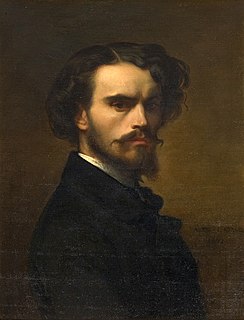
Alexandre Cabanel was a French painter. He painted historical, classical and religious subjects in the academic style. He was also well known as a portrait painter. According to Diccionario Enciclopedico Salvat, Cabanel is the best representative of the L'art pompier, and was Napoleon III's preferred painter.

Paul Dubois was a French sculptor and painter from Nogent-sur-Seine. His works were mainly sculptures and statues, and he was also a portrait painter.

Jean Alexandre Joseph Falguière was a French sculptor and painter.

Victor Alexandre Frederic Laloux was a French Beaux-Arts architect and teacher.

Henri-Jean Guillaume "Henri" Martin was a French painter. Elected to the Académie des Beaux-Arts in 1917, he is known for his work on the walls of the Salle de l'Assemblée générale, where the members of the Conseil d'État meet at the Palais-Royal in Paris, in the early 1920s. Other notable institutions that have featured his Post-Impressionist paintings in their halls through public procurement include the Élysée Palace, Sorbonne, Hôtel de Ville de Paris, Palais de Justice de Paris, as well as Capitole de Toulouse, although the Musée des Beaux-Arts de Bordeaux and Musée des Augustins also have sizeable public collections.
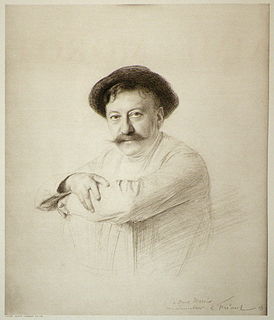
Aimé Nicolas Morot was a French painter and sculptor in the Academic Art style.

Laurent-Honoré Marqueste was a French sculptor in the neo-Baroque Beaux-Arts tradition. He was a pupil of François Jouffroy and of Alexandre Falguière. Marqueste won the Prix de Rome in 1871.
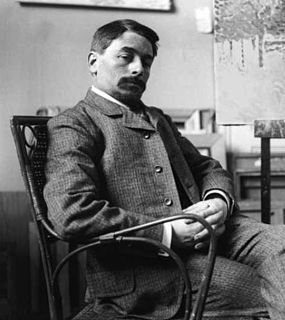
Henri Lebasque was a French post-impressionist painter. He was born at Champigné (Maine-et-Loire). His work is represented in French museums, notably Angers, Geneva, Lille, Nantes, and Paris.
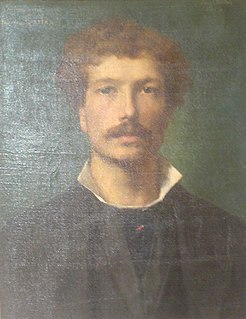
Jean-Antonin Carles was a French sculptor.

Jean Baptiste Auguste Dampt (1854–1945) was a French sculptor, medalist, and jeweler.
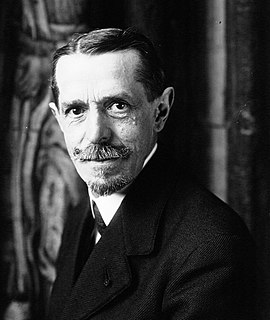
Marcel-André Baschet was a French portrait painter, notable for his numerous portraits of the Presidents of the French Third Republic.

Henri Guinier was a French portrait and landscape painter.
Jules-Isidore Lafrance was a French sculptor.

François Schommer was a French painter, watercolorist and decorative artist.
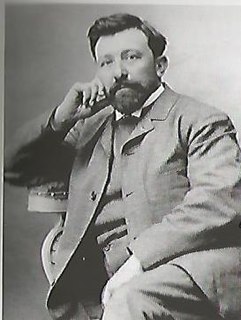
Eugène Henri Alexandre Chigot was a post impressionist French painter. A pupil of his father, the military painter Alphonse Chigot, in 1881 he entered the internationally renowned École des Beaux-Arts in Paris where he was exposed to the ideas of the realist movement of the Barbizon School and to Impressionism. He settled in Étaples in the Pas-de-Calais in an artists’ colony, later returning to Paris where he became a founder of the Salon d’Automne. An official military painter he painted a series of canvases in Calais and Nieuport recording the destruction caused by the First World War.
François Théodore Devaulx, or Théodore-François Devaulx, was a French sculptor.
Henri-Camille Danger was a French artist known for history paintings, allegorical and mythological subjects, genre scenes, landscapes and designs for tapestries.

Henri Adolphe Auguste Deglane was a French architect.

Alexandre-Albert Lenoir was a French art historian, archaeologist, and writer; best known for creating what is now known as the Musée de Cluny.
![]() Media related to Alphonse Defrasse at Wikimedia Commons
Media related to Alphonse Defrasse at Wikimedia Commons